OddCameras.com
Linhof Technika 70
The Linhof Techika cameras are a reknown standard for professional
large format photographers. Basically they are field cameras with a
drop bed, like the Graflexes and others, but they have additional back
movements close to a monorail camera. Linhof also made smaller models
which, like the smaller Graflexes, could be used as press cameras. the
Technika 70 is one of those smaller cameras.
The Technika series was launched in 1934 with a first model, soon an
improved model II was available. The 4x5 series had always a smaller
6.5x9 equivalent. There was a Press camera from which the Technika 70
derived, the 70 series was launched in 1962 and made until 1979.
The camera was built to be used as a rangefinder camera with a
rollfilm back, either 120 or 70mm film. The big and clear rangefinder
has frames for a 65mm wide-angle, a 100mm standard and a 180mm tele
lens. It also has a combined rangefinder cam for all three lenses and
3 pairs of corresponding stops on the bed. The level is visible in the
finder and there is even a built-in meter. A massive grip with a
built-in cable release helps to hold and shoot the camera. There is a
quick-release on each lens board to connect the cable to the lenses in
no time.
The size folded is roughly 21x18 x 10 cm, which is close to my 4x5
Super Technika or my Graflex Crown, and it's very heavy, about 3 kg
with a back and a lens. That's the same weight as my Super Technika
and 1 kg more than a 4x5 Pacemaker Crown. That's very heavy indeed.
Some photos:
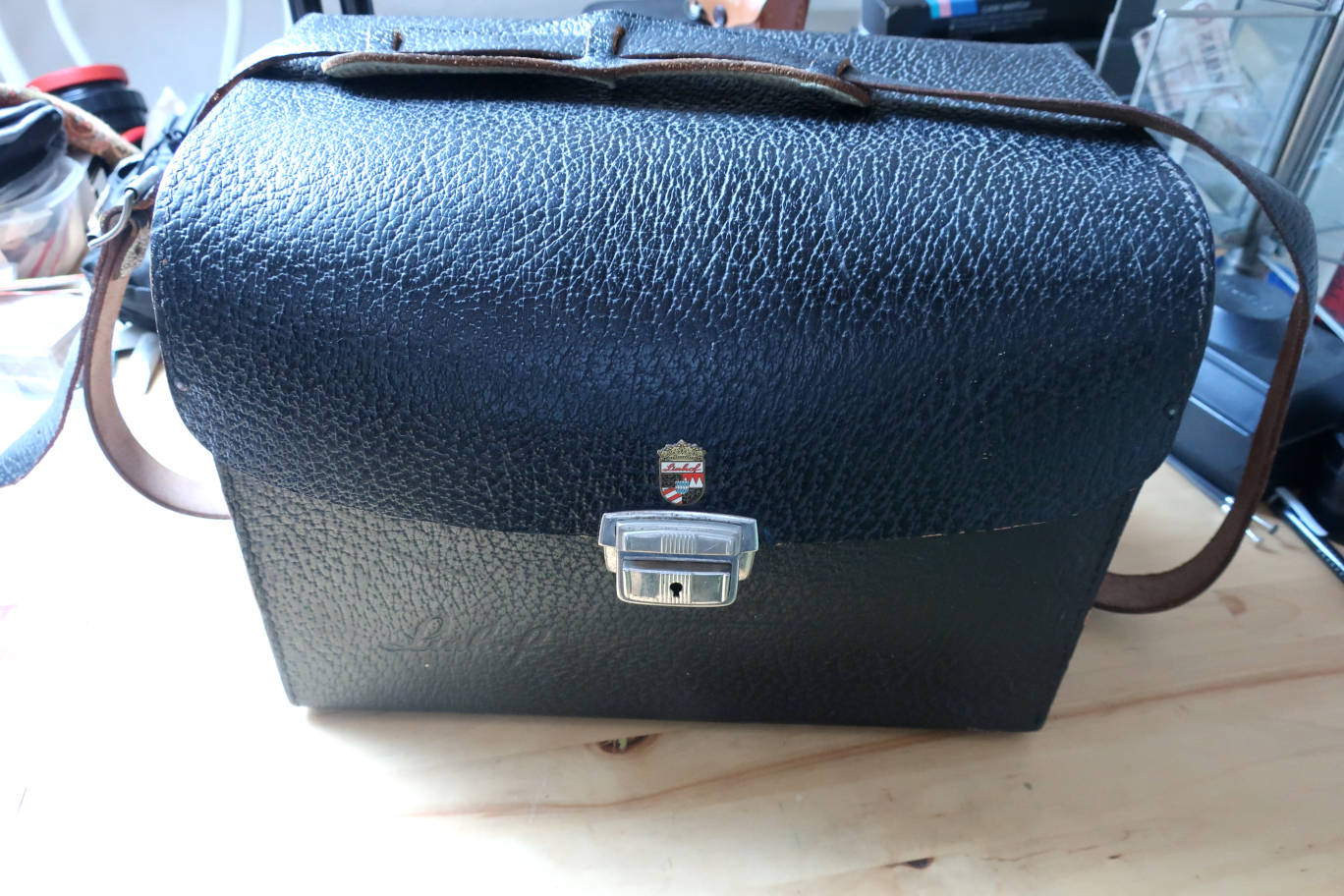
An original
Lnhof case.

Case open.
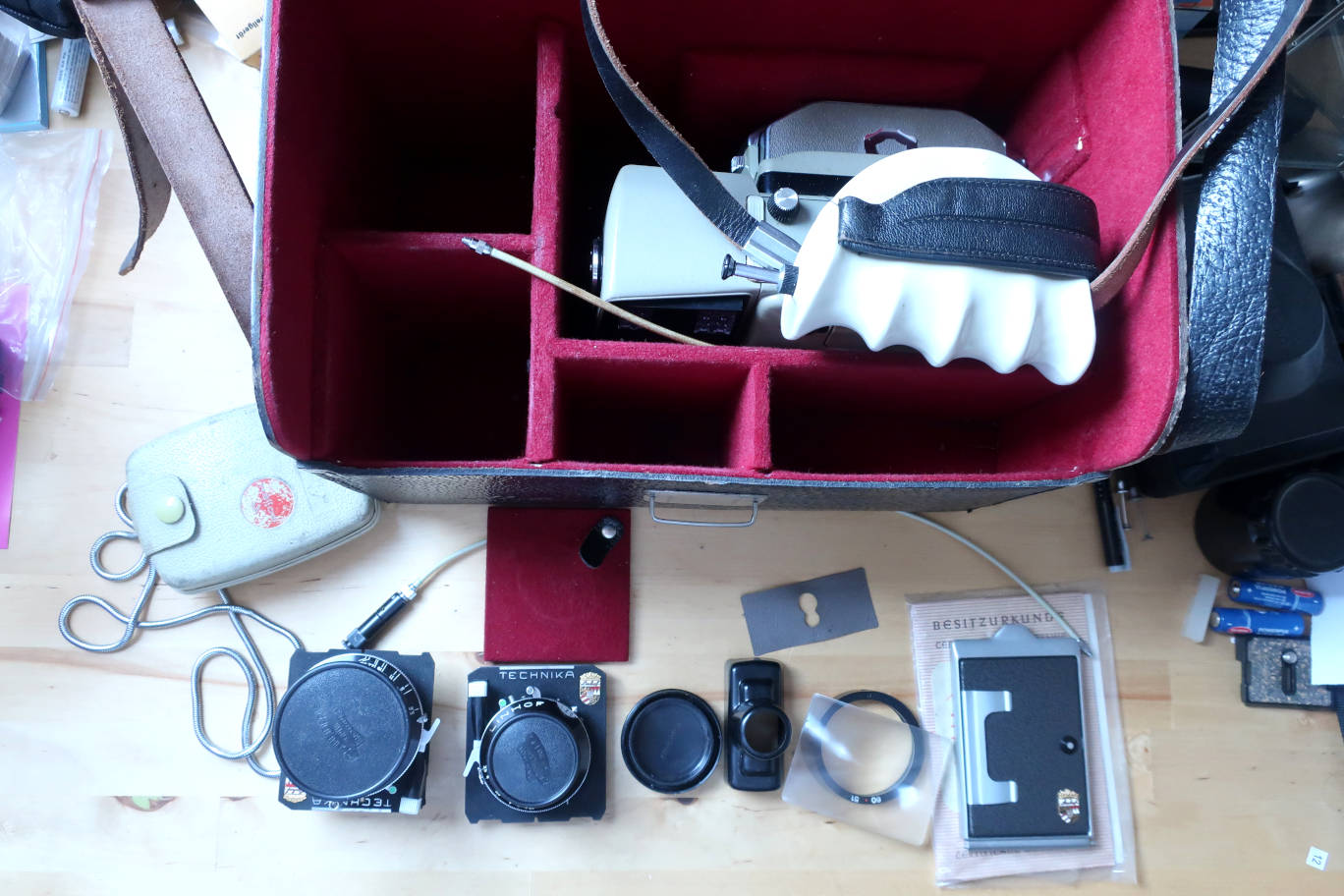
A nice set with 3 lenses and a rollfilm back.
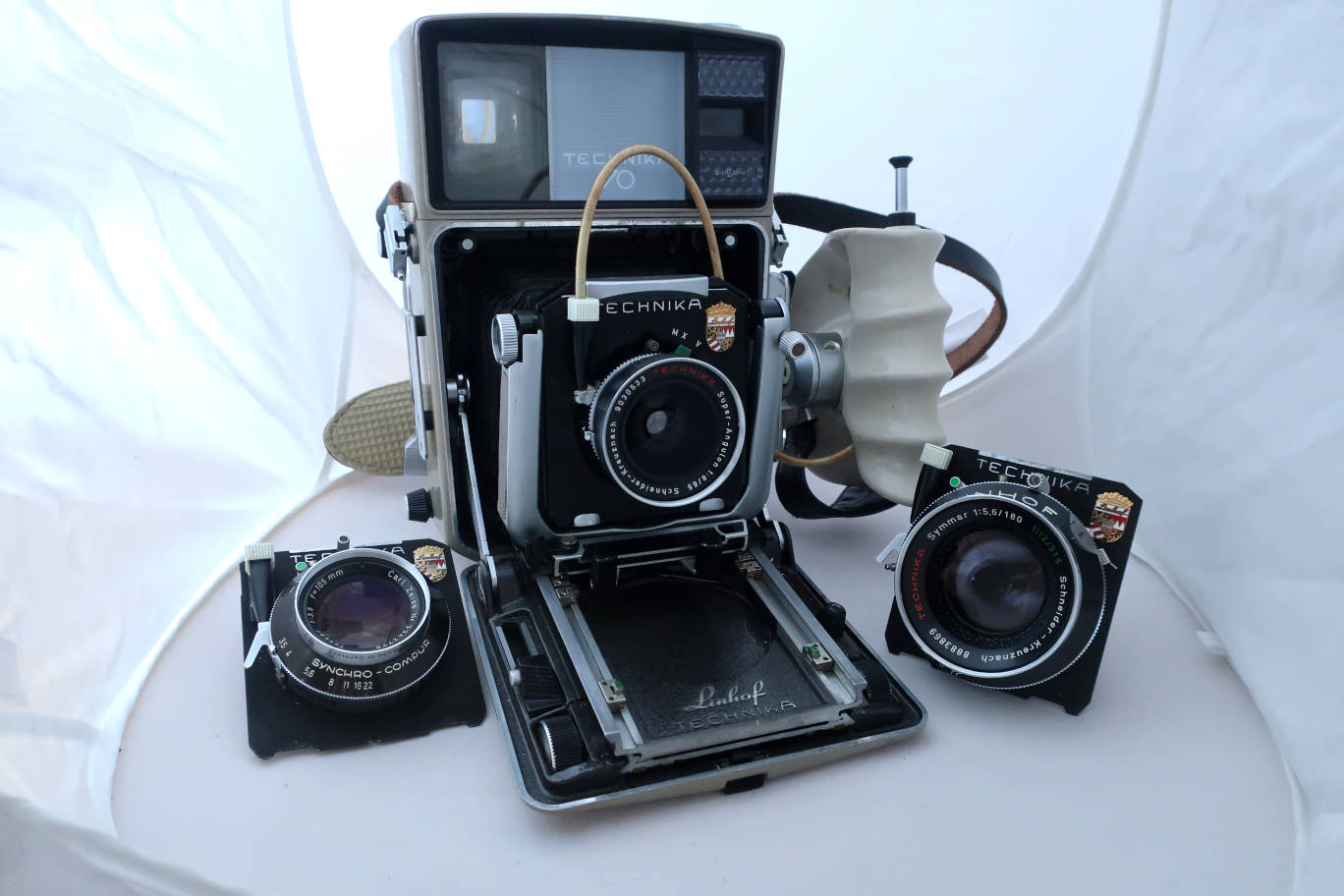
Camera open with full lens set. The rangefinder is really big.

Seen from the left.
The Technikas are not easy with wide angle lenses, you need a retracted
lensbord and even with moderate wide angles you have to drop the bed and
then compensate via tilt.
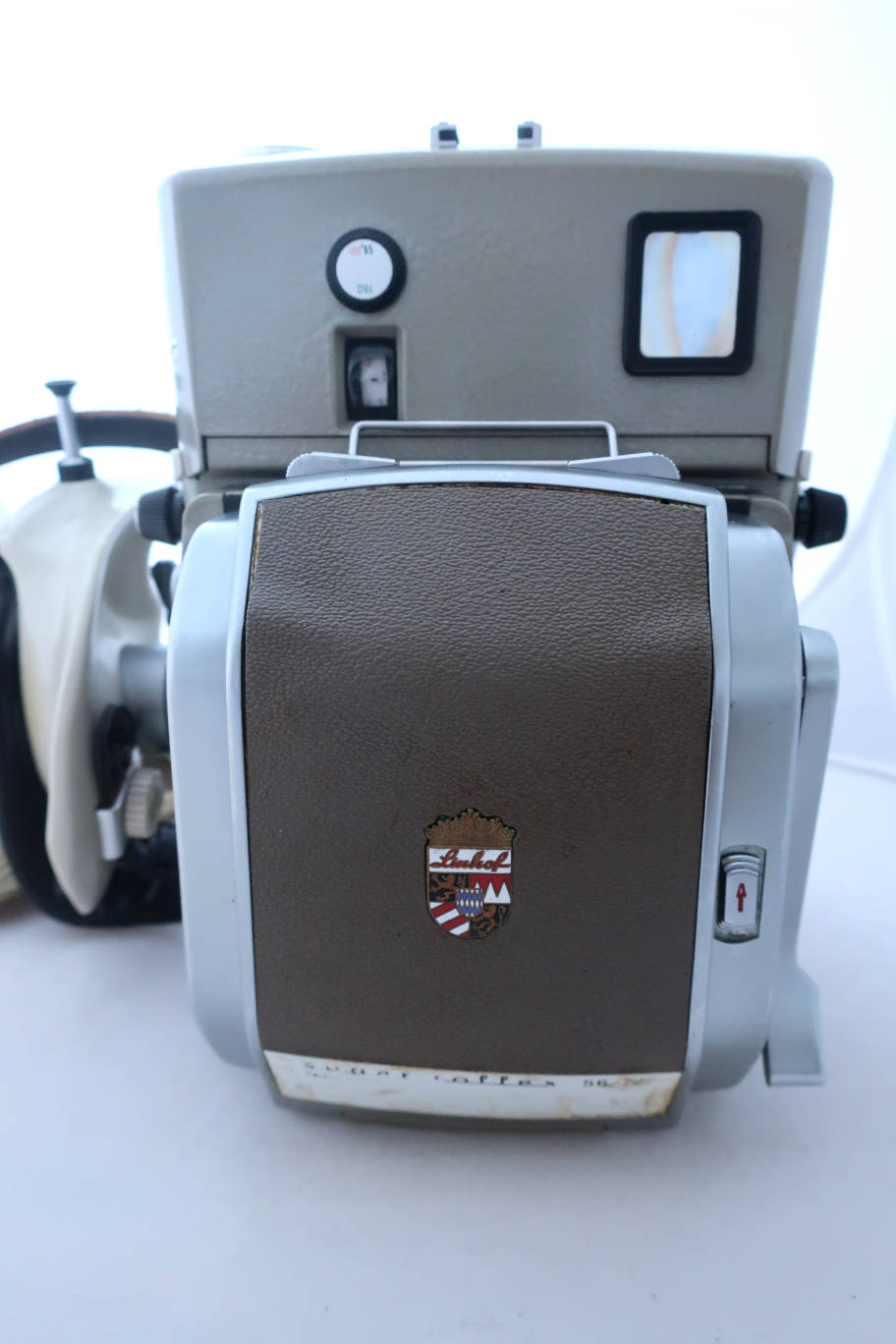
Seen from the back. Roll film back. The backs are not standard Graflex
connection, they are whole units which change rapidly via a single lever
quick release.
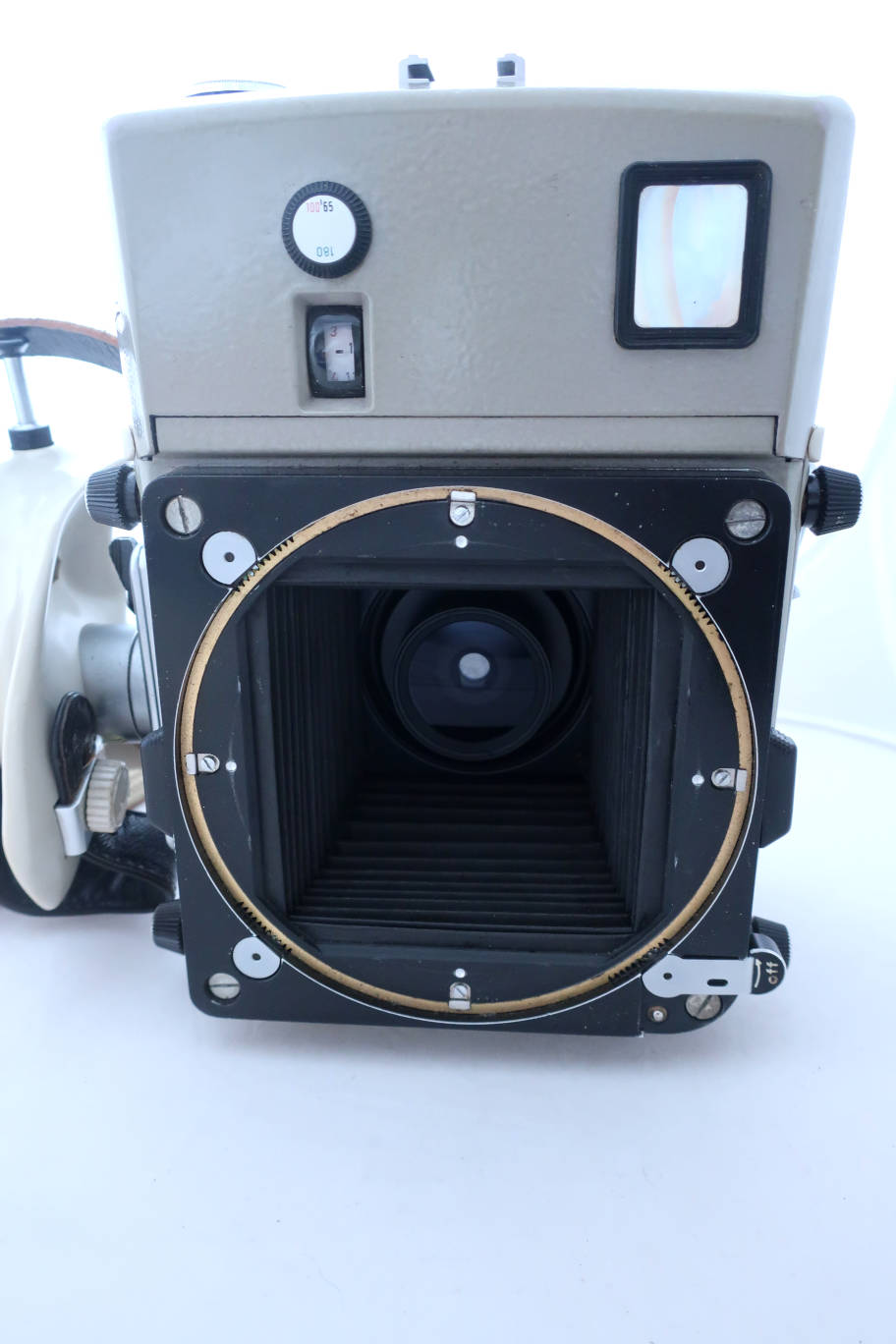
Back off. If you want a ground glass, you have to put a whole ground glass
unit. The knob near the top puts a tele mask. Under the knob is an
automatic distance indicator.
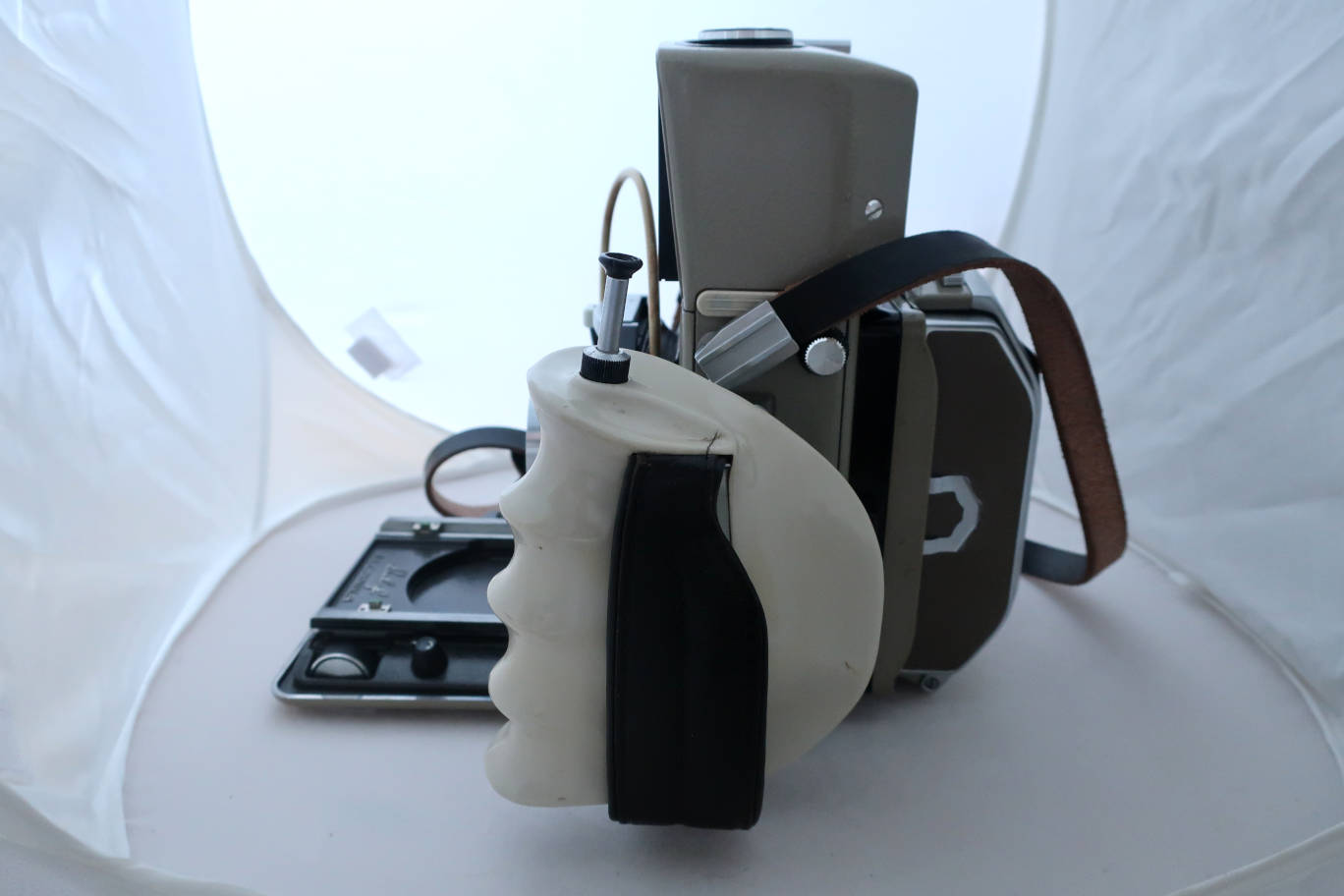
Seen from the right. Massive grip.
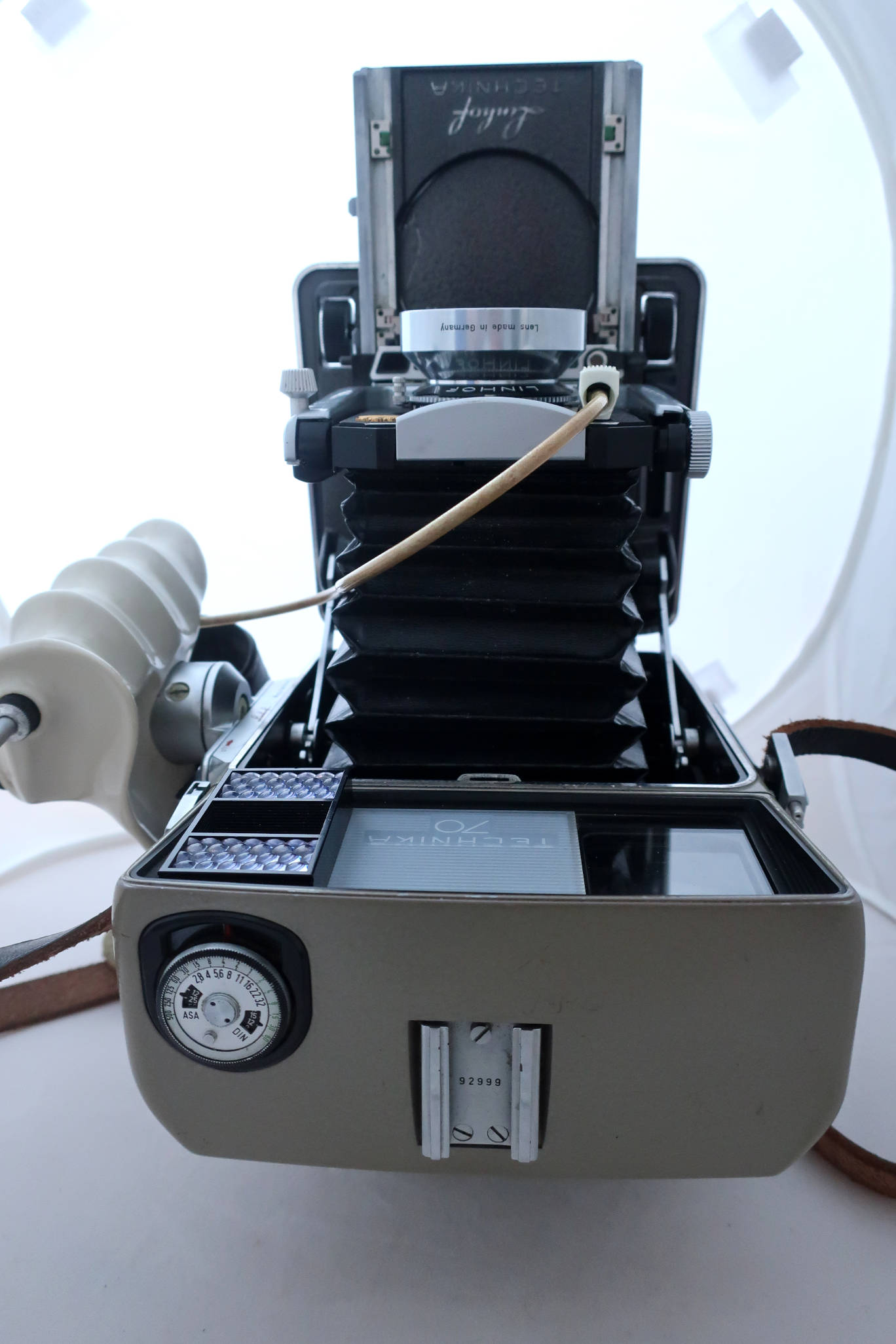
Seen from the top. The serial number is on the accessory shoe. Light meter
integrated into the housing.
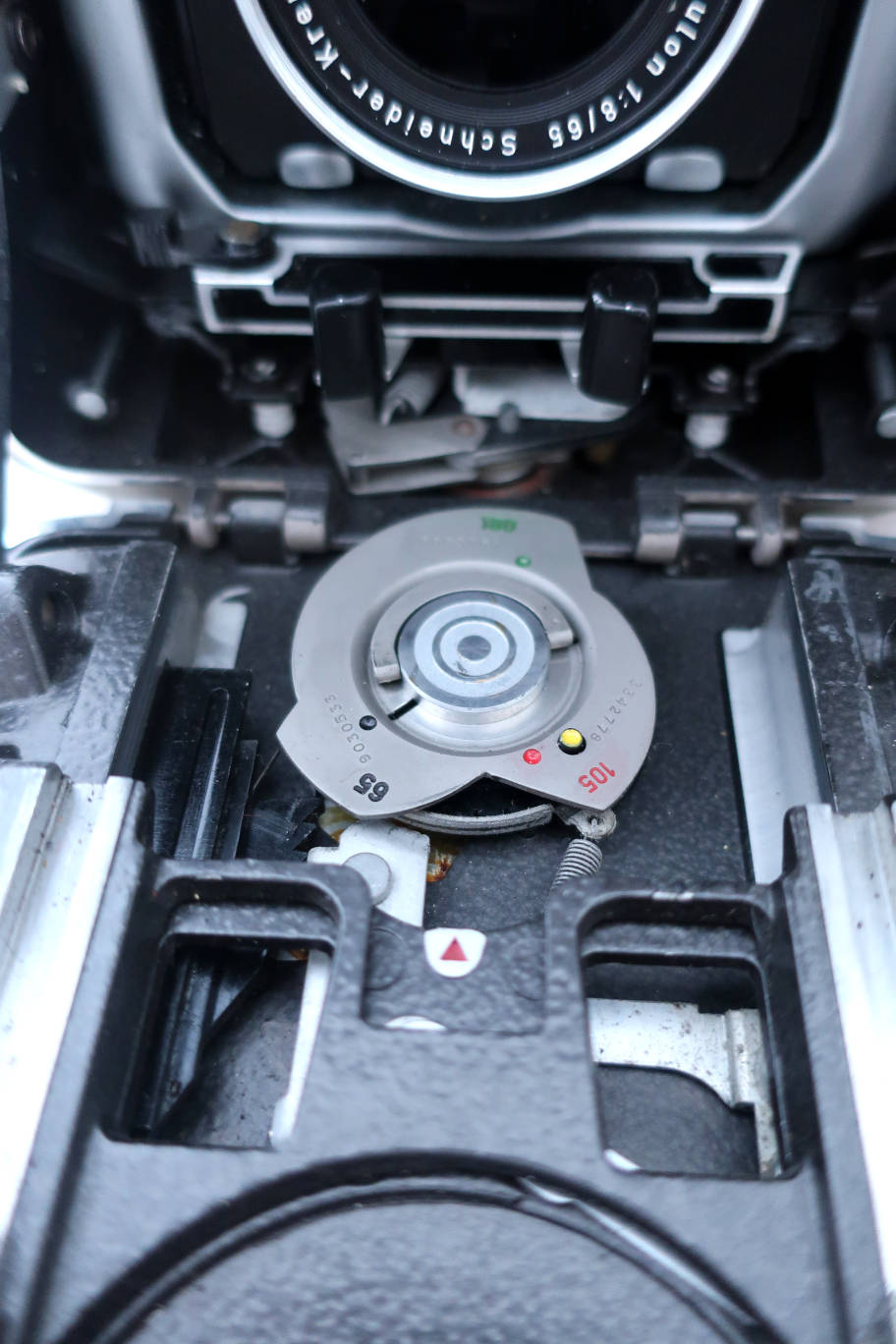
The 3-lens combined rangefinder cam. As they are individually made by the
Linhof factory, the according lens numbers are engraved. I have advanced
the bed to make it fully visible. If you just open the camera with the bed
in normal position, the little arrow on the sliding part will point to
focal length chosen. There is a slider on the left side of the bed to
change the focal. Please refer to the manual.
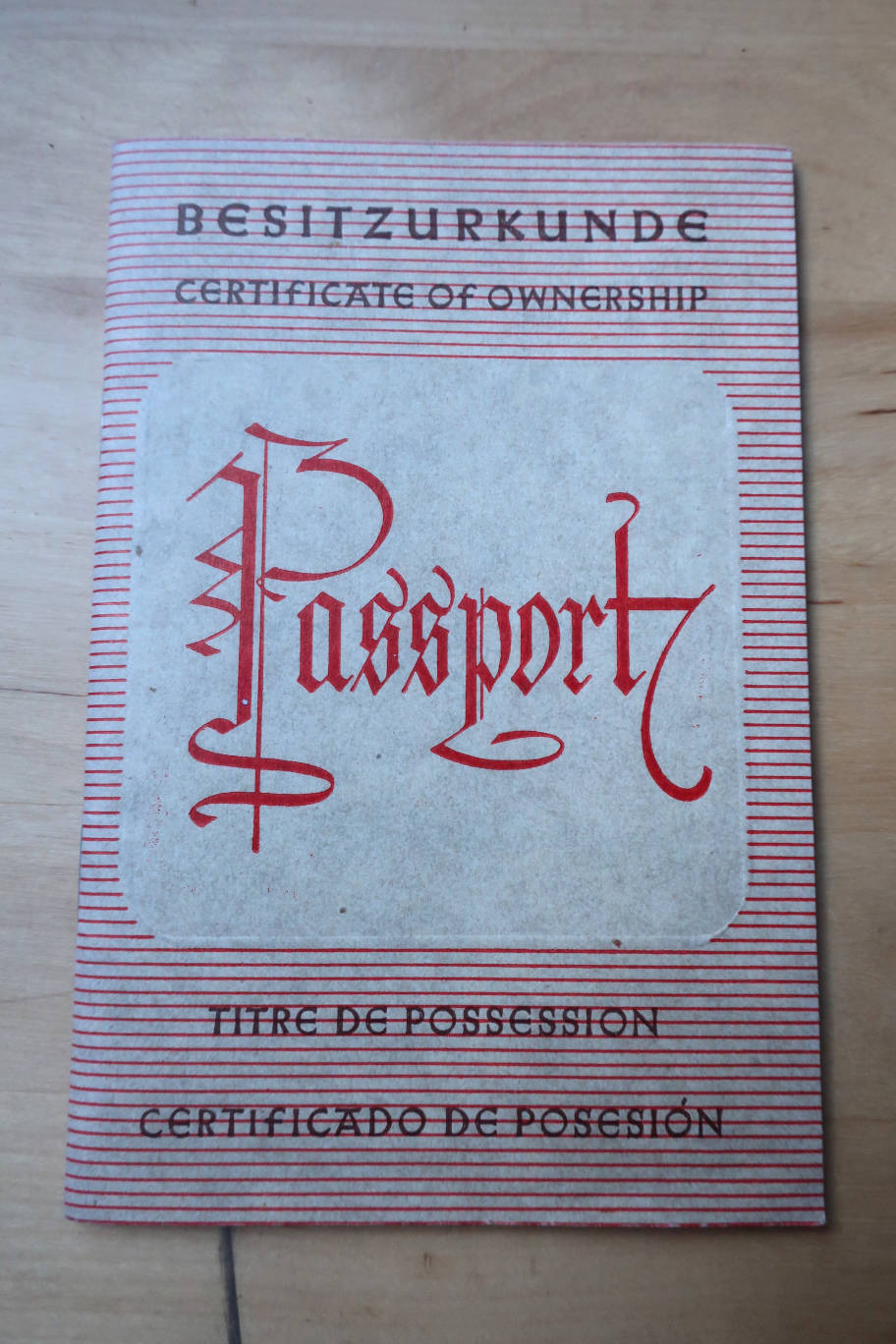
An owner's passport.
It's a very nice camera,
easy to use. It is built like a tank, very ridgid and quite heavy. The
choice of movements is huge, but you need an extra ground glass back.
Accessories are available, but tend to be on the expensive side. Very wide
angles are a problem, Graflexes are easier for this. The Technika 70 is a
workhorse, made for rangefinder use. The built-in light meter is
reliable and doesn't need a battery. It's very handy. If you need a camera
that can easily switch between the 3 standard focals and you want a
marvellous big reliable rangefinder, this is your camera.
I did not keep mine. As
I have a 4x5 Super Technika IV and 2 Graflexes that are no bigger and can
also be used with roll film backs, it doesn't make sense. The weight and
size of the camera is a real handycap, a 4x5 Graflex weighs 1 kg less. I
also own several Mamiyas of the 23/Universal series. With the 23 I can
even have some back movements with the standard lens and stay well under 2
kg..
These cameras are 40 to
50 years old. If you want to buy one, look for a reliable seller. The main
feature is the rangefinder. So check the rangefinder with care. Dust and
worn mirror coatings can make it unusable and the camera makes no longer
sense. Make sure that you have the matching cam for your lenses. Check all
lenses and shutters. Check, whether the light meter works, it's very
useful. Try to buy a complete, matching set. Any extra accessory will be
expensive. Good luck!